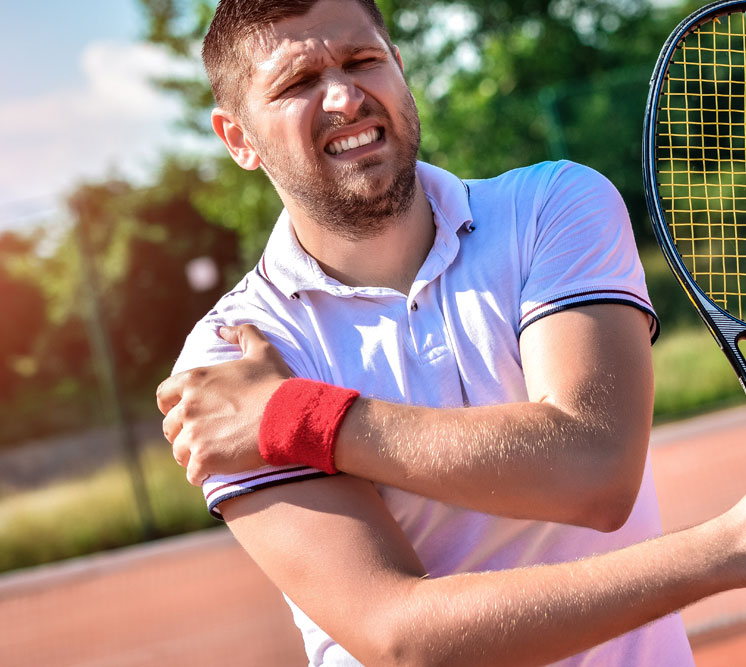Labral Tears
Do you experience sharp pain or clicking sensations in your hip or shoulder joint? These may be signs of a labral tear—a condition that affects the ring of cartilage (labrum) that supports and stabilises your joint.
At SW Yung Orthopaedic Clinic, Dr Yung offers accurate diagnosis and advanced treatment options for labral tears, including minimally invasive procedures to restore joint stability and improve movement.

What Are Labral Tears?
The labrum is a ring of cartilage that lines the socket of the shoulder or hip joint. It helps stabilise the joint by cushioning the bones and providing a secure fit. A labral tear occurs when this cartilage is damaged, often due to trauma, repetitive stress, or degeneration over time.
Labral tears can cause pain, instability, or mechanical symptoms such as catching or locking. Early treatment by an orthopaedic specialist like Dr Yung is key to preventing further joint damage and promoting full recovery.
What Causes Labral Tears?
Labral tears may result from various causes, including:
- Sports injuries involving repetitive overhead motions or pivoting (e.g. swimming, baseball, golf, soccer)
- Traumatic dislocation or subluxation of the joint
- Age-related cartilage degeneration
- Structural abnormalities such as hip impingement (FAI) or shoulder instability
- Repetitive motion from occupations or physical activities
Labral tears can occur in both the hip and shoulder joints and may progress without early treatment.
Signs & Symptoms of a Labral Tear
Common symptoms of labral tears include:
- Deep, aching pain in the hip or shoulder joint
- Clicking, catching, or locking sensations
- Reduced range of motion
- Joint stiffness or instability
- Pain that worsens with movement or prolonged sitting (hip) or lifting (shoulder)
If these symptoms are affecting your daily life or athletic performance, call us at 6235 5225 to schedule a consultation with Dr Yung.
How Are Labral Tears Diagnosed?
Diagnosis of a labral tear involves:
- Physical Examination: Dr Yung will assess joint mobility, stability, and pain points through specific manoeuvres that indicate labral involvement.
- Imaging Tests: MRI scans (with or without contrast) and sometimes CT arthrograms may be used to visualise the labrum and detect tears or associated injuries.
Early diagnosis ensures more effective treatment and reduces the risk of joint degeneration.
What Happens if Labral Tears Are Left Untreated?
If untreated, labral tears may lead to:
- Worsening pain and discomfort during activities
- Joint instability and a greater risk of dislocation
- Loss of motion and strength in the joint
- Accelerated cartilage wear and arthritis
- Reduced athletic performance and overall function
How Are Labral Tears Treated?
Treatment is tailored to the location and severity of the tear, as well as the patient's lifestyle and goals.
Non-Surgical Options
Mild to moderate tears may be managed conservatively with:
- Activity modification and rest
- Anti-inflammatory medication
- Targeted physiotherapy to strengthen the surrounding muscles
- Injections (e.g. corticosteroids) to relieve pain and inflammation
Labral Repair Surgery
For persistent or severe symptoms, surgical intervention may be necessary:
- Arthroscopic Labral Repair: A minimally invasive procedure to reattach the torn labrum using small anchors and sutures, preserving joint stability.
- Labral Debridement: In cases where repair is not possible, damaged portions of the labrum may be trimmed to reduce symptoms.
Dr Yung Shing Wai is highly experienced in performing arthroscopic labral repairs, offering patients precision treatment and faster recovery.
Recovery and Rehabilitation
Following surgery, rehabilitation is focused on gradually restoring joint strength, range of motion, and function. Physiotherapy is essential, and most patients can resume normal activities within a few months. Return to sports or intensive movements typically occurs in 4 to 6 months, depending on the joint involved and individual progress.
Trust SW Yung Orthopaedic Clinic for expert care and a structured recovery plan tailored to your needs.

